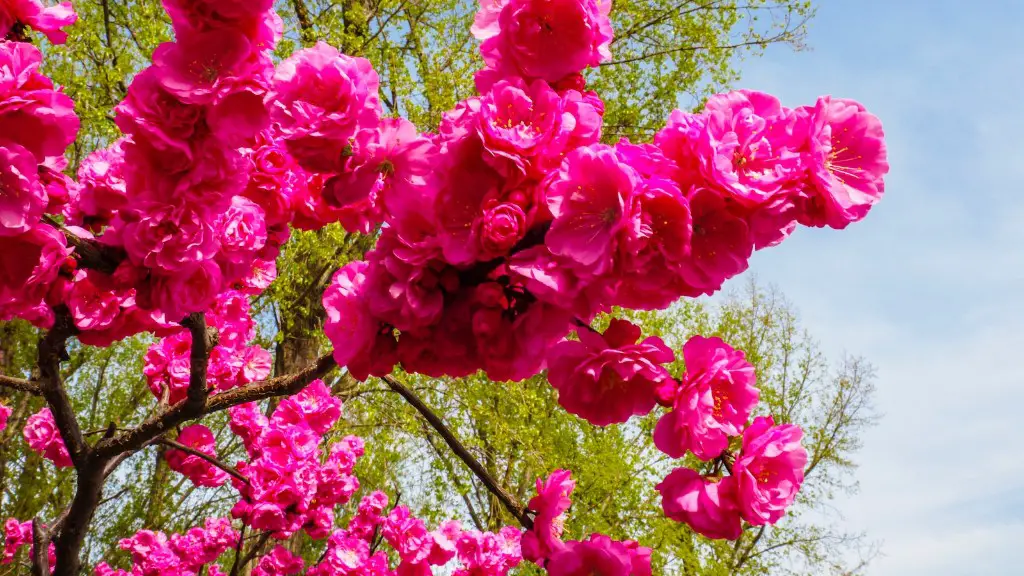Palm trees, a symbol of tropical sunshine and sunshine, can produce a romantic atmosphere for almost any landscape. However, the serenity and beauty of the palms can be severely damaged by one of many challenges that may affect the health and ultimately, the life of the tree. In order to maintain the beauty of a vigorous palm, it is important to identify what exactly can kill a palm tree.
A variety of insects, diseases, and environmental conditions can cause a palm tree to suffer, and even die. Commonly, bad soil, water, and nutrient deficiencies can be the main culprit. Roots need healthy soil in order to absorb the moisture and nutrients they need to sustain the tree and combat the hot weather. If a palm tree is planted with unhealthy soil, the palm may suffer and eventually die. Water is another key element to the health of a palm tree, while too little water leaves the palm dry, too much water suffocates the roots, resulting in a weaker root system.
Diseases can also be to blame for a dying palm tree. Fungal diseases like Ganoderma butt rot, Fusarium wilt, and Gummosis can weaken and infect a palm tree, eventually leading to death. Other factors such as thick clusters of fronds and shedding of leaves, can reduce photosynthesis and deepen the foliage, ultimately making the tree susceptible to disease and pests.
Finally, a combination of insects, parasites, and predators are an unavoidable hazard for any palm tree. These can create serious damage to the tree, thus weakening it and eventually leading to death. Some of the common insects that can affect palms include red palm mite and scale. They damage the foliage and can cause yellowing, plus leaf damage.
In order to prevent any of these factors from harming a palm tree, it is important to properly select the proper site, soil and water balance and proper fertilization. Careful examination of palms can also help detect potential problems. Having an experienced and knowledgable arborist check your palms regularly will help ensure that the palms stay healthy.
Pests and Parasites
Pests and parasites are a major problem for many palm trees. These pests and parasites can cause a wide range of problems for palms, from yellowing and deformed leaves to discoloring of fronds, and even death. Common pests and parasites include red palm mite and scale insects, whiteflies, mealybugs, and nematodes. These pests can be highly destructive, and chemical pesticides and insecticides may be necessary to effectively control them. In addition, irrigating palms regularly with clean water can help reduce pest and parasite problems.
In addition, there are some preventive measures that can be taken to reduce the risk of pests and parasites. For example, it is important to avoid over-curling of fronds, as this can provide an inviting home for pests to breed. Pruning and thinning the foliage can also help, as this will improve air circulation around the palm tree and reduce the risk of pest infestations.
Finally, it is important to monitor soil conditions and nutrient levels. Nutrient deficiencies can weaken a tree and make it more susceptible to pests and parasites. Regular fertilizing and soil testing can help to ensure that the soil is sufficiently providing the necessary nutrients and minerals for palm health.
Temperature Changes
Temperature extremes can also be devastating to a palm tree. The truth is that even in warm climates, cold temperatures can cause significant injury and death to the palm. Cold temperatures create a decrease in photosynthesis, reducing the water uptake by the roots and eventually causing damage to the foliage and even death. In addition, extreme heat can be damaging to the leaves, causing them to dry out and flake, and weakening the entire tree. In order to avoid this, it is important to ensure that the palm is planted in a location that provides adequate protection from extreme temperatures.
It is also important to avoid heavy pruning or trimming of the tree in times of extreme temperatures. This can shock the tree, resulting in a weakened root system and damage to the foliage. On the other hand, adequate watering and protecting the tree from overexposure to the sun can help ward off the effects of both heat and cold.
Fertilizer
Fertilizer is an important part of any tree’s health, and in the case of palm trees, it can mean the difference between life and death. Fertilizer provides essential nutrients that stimulate better development and growth, as well as healthier looking fronds. It is important to fertilize regularly and not over fertilize, as this could lead to root burn and an unhealthy tree. Monitoring the soil and nourishing it appropriately will help ensure that the palm tree is receiving all the necessary nutrients and minerals in order to flourish.
Weed Control
Weeds can be one of the most damaging competitors for a palm tree and can quickly take away valuable resources. It is important to control the growth of weeds within the palm’s vicinity, as weeds can reduce photosynthesis and root growth, making the tree more vulnerable to pests, diseases, and eventually death. Regularly pulling or spraying chemicals to kill weeds can help to control their growth.
Disease Prevention
Properly identifying and treating palm tree diseases is important in order to keep the tree healthy. There are many palm tree diseases that could kill the tree, such as Ganoderma butt rot, Fusarium wilt, and Gummosis. If these diseases are not treated earlier on, they could spread, killing the tree. As soon as signs of disease are identified, it is important to consult an experienced arborist in order to identify the problem and create a plan of action.
Proper Planting
When planting a palm tree, it is important to take into consideration all of the issues that can arise and lead to its death. It is important to select the proper site and soil, to avoid any compacted, sandy or clay soil, as this could suffocate the roots. Selecting a location that is not overly sunny, too moist or too dry is also important. Additionally, when planting the tree, the root ball should be buried to level with the surrounding ground in order to penetrate the roots and allow for adequate water intake.
Wind Damage
Wind damage can be a major concern for palms, and in certain locations, particularly those located near the ocean or in mountainous areas, wind can cause catastrophic damage to the palm tree. Wind can cause branches to be ripped from the tree, and in extreme cases, the entire tree can be uprooted. Planting in an area that has some degree of protection from the wind, such as behind a fence, house, or other structure can help to protect the palm tree.
Conclusion
In conclusion, there are several factors that can be the cause of death for a palm tree. Poor soil, improper watering, disease, pests, and parasites, extreme temperatures, inadequate fertilizer, weed control and wind damage are all factors that can contribute to a weakened or dead tree. Understanding these challenges and taking preventative measures can help to keep your palm tree healthy and lively, and ultimately help to ensure its longevity.




